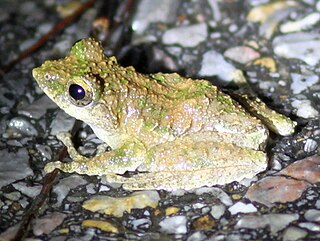
Abies fargesii is a species of fir, a coniferous tree in the family Pinaceae. Its common name is Farges' fir, after the French missionary, botanist and plant collector, Paul Guillaume Farges. Abies fargesii can grow very large and be up to 40 metres (130 ft) tall. It is endemic to central China where it is found in Gansu, Henan, Hubei, Shaanxi, and Sichuan provinces. It grows in mountains and river basins at altitudes between 1,500–3,900 metres (4,900–12,800 ft) ASL. The cones of the given fir are 0.8 to 1.5 by 1.3–2 centimetres (0.51–0.79 in).
Leptolaena pauciflora is a species of flowering plant in the Sarcolaenaceae family. It is found only in Madagascar. Its natural habitats are subtropical or tropical moist lowland forests, subtropical or tropical high-altitude shrubland, and sandy shores. It is threatened by habitat loss. The specific epithet pauciflora is Latin for 'few-flowered'.
Arenga micrantha, also known as the Tibetan sugar palm, is a species of flowering plant in the family Arecaceae, found in the cloud forests of Tibet, Bhutan, and North-East India. Its natural habitat is subtropical or tropical moist lowland forests, between 1400 and 2150 m. It is threatened by habitat loss.
Calamus compsostachys is a species of flowering plant in the family Arecaceae. It is found only in China. Its natural habitats are subtropical or tropical dry forests and subtropical or tropical moist lowland forests.
Calamus egregius is a species of flowering plant in the family Arecaceae. It is found only in the Hainan region of China. Its natural habitats are subtropical or tropical moist lowland forests and subtropical or tropical moist montane forests.
Plectocomia microstachys is a species of flowering plant in the Arecaceae family. It is endemic to Zhōngguó/China. Its natural habitats are subtropical or tropical moist lowland forests and subtropical or tropical moist montane forests. It is threatened by habitat loss.

Trachycarpus nanus is a species of flowering plant in the family Arecaceae. It is found only in China. Its natural habitat is subtropical or tropical moist lowland forests. It is threatened by habitat loss.

The long-snout torrent frog is a species of frogs in the family Ranidae.

The Mascarene grass frog, or Mascarene ridged frog, is a species of frog in the family Ptychadenidae. It is found in sub-Saharan Africa, Madagascar, and Mauritius.

Kurixalus odontotarsus is a species of frog in the family Rhacophoridae. It is found in southern China, Vietnam, Laos, and possibly Myanmar. Its natural habitats are subtropical or tropical moist lowland forests, subtropical or tropical moist montane forests, subtropical or tropical moist shrubland, intermittent freshwater marshes, heavily degraded former forest, and canals and ditches. It is threatened by habitat loss.
Axinaea pauciflora is a species of plant in the family Melastomataceae. It is endemic to Ecuador. Its natural habitat is subtropical or tropical moist montane forests. The specific epithet pauciflora is Latin for 'few-flowered'.
Brunellia pauciflora is a species of plant in the Brunelliaceae family. It is endemic to Ecuador. Its natural habitat is subtropical or tropical moist montane forests. It is threatened by habitat loss. The specific epithet pauciflora is Latin for 'few-flowered'.

Habenaria fargesii is a species of plant in the family Orchidaceae. It is endemic to China.
Hirtella pauciflora is a species of plant in the family Chrysobalanaceae. It is endemic to Ecuador. Its natural habitat is subtropical or tropical moist lowland forests. The specific epithet pauciflora is Latin for 'few-flowered'.
Leptochilus cantoniensis is a species of fern in the family Polypodiaceae. It is endemic to China. Its natural habitats are subtropical or tropical moist lowland forests and subtropical or tropical moist montane forests. It is threatened by habitat loss.
Neocheiropteris palmatopedata is a species of fern in the family Polypodiaceae. It is endemic to China. Its natural habitats are subtropical or tropical dry forests and subtropical or tropical moist lowland forests. It is threatened by habitat loss.
Palisota preussiana is a species of plant in the Commelinaceae family. It is found in Cameroon and Equatorial Guinea. Its natural habitats are subtropical or tropical moist lowland forests and subtropical or tropical moist montane forests. It is threatened by habitat loss.

Hylarana macrodactyla is a species of frog in the family Ranidae. It is also known as the Guangdong frog, three-striped grass frog and the marbled slender frog.
Torreya fargesii is a species of conifer in the family Taxaceae. It is a large tree that can be up to 20 metres (66 ft) tall. It is endemic to central and southern China; it is found in Hubei, Hunan, Jiangxi, Shaanxi, Sichuan, and Yunnan provinces, and possibly in Anhui. It occurs in coniferous, mixed, and broad-leaved forests at altitudes 1,000–3,400 metres (3,300–11,200 ft) ASL. The seeds can be pressed for oil. The wood is used in construction and furniture.
Calamus nambariensis is a species of flowering plant in the family Arecaceae. It is found in Burma, Laos, Vietnam, Thailand, Nepal, Bhutan, Bangladesh, the Assam region of India and the Yunnan region of China.







